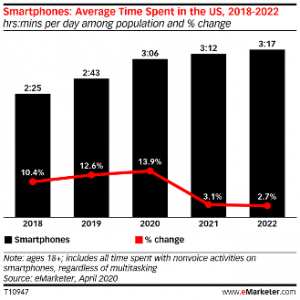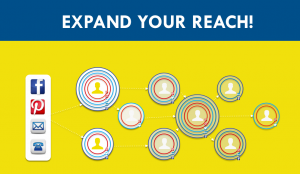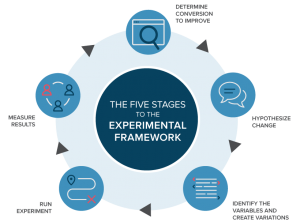Three major clients reflect on their different journeys with Pega decisioning and customer service solutions.
As reflected at this month’s PegaWorld iNspire, Pega’s offerings range from back-office process automation to customer-facing real-time journey creation — all driven by AI. We sat down with three major Pega clients to understand their very different journeys.
And we started with the business that is actually Pega’s oldest existing customer.
Citi and Pega: A ruby anniversary
“While Pega has been with Citi for forty years, I have not,” said Promiti Dutta, head of analytics, technology and innovation for the U.S. personal banking part of Citi. Her Pega journey started when she joined Citi, four years ago.
“The analytics group I am part of oversees how data and analytical capabilities get piped across the firm. We knew that our decision engine was end-of-life and we needed a new one, so the first interactions I had with Pega was with individuals trying to sell us the new Customer Decision Hub. Honestly, we did some research because Pega doesn’t have a monopoly on this — Salesforce has the Einstein machine, Adobe has one, there were some bespoke ones we came across from some smaller names — but the reality was no decision engine has it all and some customization would be needed.”
The conversation turned to who would make the better partner and who would be the best fit with Citi’s vision given the capabilities they were offering. “So which partner did we want to work with? Which partner fit into our vision in the best possible way with the capabilities they were offering at that point four years ago? Pega was certainly the top runner for that.”
Of course, for decades Citi had been running other Pega solutions such as various workflow tools and business case management. Indeed, it wasn’t new to decisioning (at one point it was using Chordiant, the BPM and CRM platform ultimately acquired by Pega). “We were already having customer conversations,” said Dutta, “just not with as much sophistication as the Pega decision engine offers.”
Pega Customer Decision Hub uses AI to identify and suggest next-best-actions for each individual customer in real-time. Citi makes a slightly narrower use of the Hub.
“What we offer to the customer is actually not decided by the decision engine,” explained Dutta. “We have a number of advanced methods and capabilities that we have built internally to determine the ‘what.’ It’s the ‘when’ and the ‘where’ that we use the Decision Hub for. All the ‘whats’ are loaded in an offer palette; using contextual clues and models that run in the decision engine, it figures out when the customer sees the offer.”
Citi already has predictions about what a customer needs, whether in the form of a product or an offer or some other form of engagement. “What Pega’s decision engine does is, knowing that you’re qualified to receive an offer, or something else, which one should be shown now to be contextually relevant,” Dutta said, adding that the full range of channel interactions are available for Pega to use to make that educated decision.
Like any financial institution, Citi exercises extreme caution in its interactions with customers, strictly respecting model risk management, fair lending and privacy protocols. That does mean some constraints on the use of AI. “Anything that feeds into our Pega Decision Hub undergoes the same scrutiny. We had to send the entire decision engine through that same process to ensure that customers would not be adversely affected.”
Verizon: Hyper-personalization for business and consumer
Verizon’s business journey started before Tommi Marsans joined Verizon Business Group. Michael Cingari, now VP of marketing science, CX and CRM, had started using Pega’s next-best-action solution several years ago on the consumer side of the business in the customer call center.
“I came through the XO Communications acquisition by Verizon, ” said marketing tech strategist Marsans. “When Verizon 2.0 re-organized us, Mike Cingari started a marketing sciences practice and pulled some of us through there to do a Pega implementation for business. That was 2019. It took us a while to get started, but once we started and had our business case approved, it took us less than 13 months to start showing a return. We did better than break even the first year, then the second year: 20X.”
As with the consumer-side Pega implementation, Marsans and her team were working in the reactive decisioning space — determining next-best-action in response to customer behavior (in this case, business customers). “So when somebody called the call center and wanted to disconnect, there would be a next-best-action for them. We expanded to growth opportunities and upgrades; then went into the non-assisted space, digital, and grew from there.”
We asked her to explain the impact of next-best-action on customer service. “The difference that we’re making is in the assisted channels, where the service reps would delight the customer at all costs — so they always went to the richest offer because that’s the one that would stick, and they never really looked at alternatives. When we gave them alternatives, they used them and it was just as successful; solving a problem for the customer, rather than just paying them to stay, gives a better customer experience as well as a user experience.”
Marsans emphasizes that the customer decisioning is hyper-personalize. “It’s not what we would like to talk to them about; it’s the next-best-offer that we think they would want. It’s not just offers; especially on the business side, there are fully baked solutions. We talk to them about the next best one of those.”
Of course, for the Customer Decision Hub to make informed judgements on next-best-actions, it needs to be trained on what has worked in the past. “If you have transaction history,” said Marsans, “you can feed the engine and basically just jump-start it. We also have traditional regression models that we feed into it as well. We are just now starting to use the adaptive modeling [AI in the Decision Hub]. The AI part of the engine required some learning for us, not the machine, to know how to present offers and what’s the right sequence of events.”
Marsans told us she is excited about the generative AI solutions Pega is launching. “No matter what business case you have, no matter what use case you’re built out to solve for, you can re-use that. You can use that as the base for other things. I don’t think you need to have a full implementation that’s reaching to every single channel. I think you can start where you start.”
Finally, how difficult was it to get marketers to buy into what is, in many ways, a counter-intuitive mindset? “The dream of every marketer is to have a clear customer journey and be able to influence them along the way to get them to where you want them to be,” said Marsans. “It’s hard for them to think in terms of it being an ongoing conversation across many different channels, as opposed to ‘I need to send you something that you need to respond to.’ That’s a bit of a paradigm shift, but if you can show them with the first couple of use cases that you can get there, then they’re fully on board.”
Aflac: Shortening the time to value
Right now, Aflac has completely different use cases for Pega than Citi and Verizon. It’s just starting to look at the possibilities for Customer Decision Hub. Primarily, Pega has been deployed to analyze and automate business processes and workflows. Much use has been made of Pega’s low-code App Studio to create applications that understand and then automate business processes.
“It’s one of the initiatives which is aligned with our One Digital Aflac strategy,” said U.S. CIO Shelia Anderson. “I think the journey has been about six or seven years, focusing on opportunities to bring in a more automated approach to addressing some of the technical data and legacy issues that we had.”
Anderson is relatively new to both Aflac and Pega. “I’m still learning. I’ve been in the organization for ten months and, as you can imagine, I haven’t been focused at the very detailed level of the core platforms; I’ve been focused more on the enterprise strategy.” But she has witnessed the challenge some groups within the organization have had in adjusting to Pega’s low-code approach.
“For me the biggest adjustment that I see is around engineering staff and their expectations, because engineers enjoy creating code; there’s a bit of a pivot to get them to see the value not doing all of their code from scratch — a lot of that foundational work has been done for you, which gives you a jump start.”
Business users have embraced the opportunities created by low code. Aflac recently ran a “Pegathon” at which business users had the run of App Studio to create apps to address specific use cases. More are planned. “It’s a very immersive way to start getting some of our business users accustomed to the tooling, to leverage that low-code approach to development and letting them see some of the value they can create on their own.”
One impact Pega has had has been on claims processing. “We found we were spending a lot of time on lower-complexity claims (that are also more of a lower-dollar payout),” Anderson explained. “After looking at that, we found it would be more effective for us to just auto-pay those claims. We now use automation, AI or machine learning and a workflow process to auto-pay those. That’s been a huge simplification for our customer service reps, freeing them up to focus on more complex and critical cases.”
Anderson currently has a team focused on generative AI, where it’s a priority to monitor safe use and the protection of Aflac data. She has also established a Pega Center of Excellence and a Community of Practice: “That’s a huge piece of where the learning has occurred. Within that community we have people who have spent seven years with Pega and newer individuals coming into that group.”
Perhaps the most tangible impact Aflac cites, though, sprang from its use of Pega to consolidate multiple customer care applications on multiple screens into a single platform and simplify the work of customer care representatives. Anderson reports a 33% reduction in handling time for calls requesting claims forms; a 65% reduction in handling time for customer authentication; and approximately 77% of all chats fully handled by Pega virtual assistants last year (representing a saving of approximately $ 4 million).
On the PegaWorld main stage, Anderson talked about “shortening the time to value for everything we’re doing and keeping the customer lens and focus on.”
The post Citi, Aflac and Verizon: Three different Pega journeys appeared first on MarTech.
MarTech(2)







